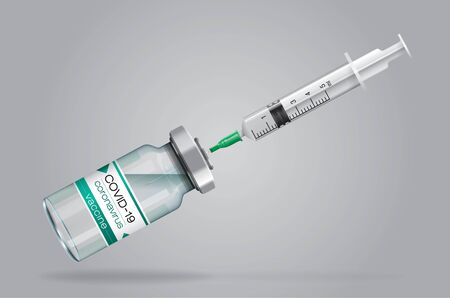Introduction to Botulinum Toxin Treatments in the UK
Botulinum toxin treatments have become a cornerstone of both cosmetic and medical procedures across the UK, gaining remarkable traction over recent years. At their core, these treatments involve the precise administration of a neurotoxic protein—commonly referred to by brand names such as Botox, Dysport, and Azzalure—to temporarily relax specific muscles. This process is best known for its ability to smooth dynamic facial lines, but its uses extend far beyond aesthetics. Increasingly, botulinum toxin is being utilised within the British healthcare system to address medical concerns such as chronic migraines, hyperhidrosis (excessive sweating), and certain muscular disorders.
What sets botulinum toxin treatments apart is their minimally invasive nature and proven efficacy. For those seeking subtle yet noticeable enhancements or relief from challenging medical conditions, these injections offer a practical solution with minimal downtime. The surge in popularity can be attributed not only to their effectiveness but also to an evolving cultural acceptance of non-surgical interventions within the UK. As more people prioritise self-care and confidence, demand for these procedures continues to rise—fuelled by advancements in technique and a growing array of trusted brands available on the market.
Overview of Leading Botulinum Toxin Brands: Botox, Dysport, and Azzalure
When considering botulinum toxin treatments in the UK, three names consistently rise to the top: Botox, Dysport, and Azzalure. These brands have all been approved for use by the Medicines and Healthcare products Regulatory Agency (MHRA) and each carries a unique heritage as well as distinct characteristics that influence their application and results.
Historical Context and Brand Introduction
Botox, manufactured by Allergan, is often regarded as the pioneer in this field. First approved for medical use in the UK in the late 20th century, it quickly became synonymous with wrinkle reduction and has maintained its reputation for reliability and precision. Dysport, produced by Ipsen, entered the market shortly after and is renowned for its slightly different formulation which allows for a broader diffusion—making it an excellent choice for treating larger areas. Azzalure, developed by Galderma, is closely related to Dysport in terms of active ingredient but is specifically tailored for aesthetic applications, particularly frown lines.
Key Differences at a Glance
| Brand | Manufacturer | UK Approval Year | Main Use | Notable Features |
|---|---|---|---|---|
| Botox | Allergan | 1994 | Medical & Cosmetic | Highly targeted; longstanding clinical history; precise dosing |
| Dysport | Ipsen | 1990s | Medical & Cosmetic | Smoother diffusion; suitable for larger areas; quick onset for some patients |
| Azzalure | Galderma (Ipsen) | 2009 | Cosmetic (glabellar lines) | Aesthetic-focused formulation; similar to Dysport but licensed specifically for facial aesthetics |
Cultural Relevance in the UK Context
The British aesthetic industry values safety, subtlety, and natural-looking results. Each brand offers practitioners the flexibility to cater to these preferences—whether you’re seeking a softly refreshed appearance or more noticeable rejuvenation. By understanding what sets each option apart, you can feel empowered to make informed choices alongside your practitioner and achieve results that align with both your personal goals and UK standards of care.

3. Key Differences Between Brands: Formulations, Dosing, and Effects
When choosing a botulinum toxin product in the UK, both practitioners and patients benefit from understanding the subtle yet significant differences between leading brands such as Botox, Dysport, and Azzalure. While all are approved for cosmetic use and share the core ingredient—botulinum toxin type A—their formulations, dosing requirements, and clinical effects can vary notably.
Formulation Nuances
Beneath the surface, each brand’s formulation is unique. For example, Botox contains onabotulinumtoxinA with specific stabilisers, while Dysport and Azzalure utilise abobotulinumtoxinA but differ in their proprietary protein complexes. These distinctions influence how the product diffuses within facial muscles and may affect treatment outcomes, especially in areas requiring precision such as around the eyes or forehead.
Dosing Considerations
Dosing is not one-size-fits-all. The units of measurement are not interchangeable across brands—what works for 20 units of Botox does not equate to 20 units of Dysport or Azzalure. UK practitioners pay close attention to these conversions to ensure optimal results and safety for their patients. This careful approach helps maintain natural-looking results and minimises the risk of unwanted side effects.
Onset Times and Longevity
The time it takes for results to become visible can also differ. Many UK patients report that Dysport and Azzalure often have a slightly quicker onset compared to Botox, with some noticing changes within two to three days rather than four to seven. However, longevity is fairly comparable, with most products providing visible smoothing of lines for three to four months on average.
Strengths and Suitability
Each brand holds its own strengths depending on patient needs and practitioner preferences. Botox is widely praised for its consistent results and established safety record, making it a trusted choice for many clinics. Dysport offers a softer spread, which some practitioners find ideal for treating larger areas like the forehead, while Azzalure is valued for its subtle finish in delicate regions. By tailoring their choice based on these unique properties, UK clinicians ensure every patient receives a bespoke treatment experience.
4. Considerations for Practitioners and Patients in the UK
When choosing between botulinum toxin brands such as Botox, Dysport, Azzalure, and others in the UK, both practitioners and patients need to weigh several practical factors unique to the British context. This includes not only product availability but also differences between NHS and private clinic offerings, safety profiles of each brand, and current consultation trends across the country.
Availability and Access
In the UK, access to botulinum toxin treatments can vary depending on whether you seek care through the NHS or a private clinic. While cosmetic applications are largely confined to private practices due to NHS restrictions, certain medical uses—like treating chronic migraines or muscle spasticity—may be available via NHS referral. It’s essential for patients to understand where specific brands are offered, as some clinics may have exclusive partnerships with particular manufacturers.
| Brand | NHS Availability | Private Clinic Availability |
|---|---|---|
| Botox | Yes (Medical Indications) | Widely Available |
| Dysport | Yes (Medical Indications) | Widely Available |
| Azzalure | No | Commonly Available |
| Bocouture | No | Available in Select Clinics |
Safety Profiles and Patient Expectations
The UK has rigorous safety regulations overseen by the MHRA (Medicines and Healthcare products Regulatory Agency). All approved brands must meet strict standards, but there can be subtle differences in formulation that influence efficacy and side effect profiles. Practitioners should always review patient history carefully during consultations and ensure patients are aware of possible reactions specific to each brand. Open communication builds confidence and helps manage expectations regarding results and recovery times.
NHS vs. Private Clinics: Key Differences
The distinction between NHS and private clinics is particularly significant in Britain. The NHS provides botulinum toxin mainly for therapeutic purposes under clear guidelines, whereas private clinics cater largely to aesthetic demands. This difference affects not just availability but also cost, waiting times, and the breadth of brands offered. Patients seeking cosmetic procedures should be prepared for out-of-pocket expenses and may find a broader selection of brands in private settings.
Consultation Trends Across the UK
The consultation process has evolved in recent years, with an increasing emphasis on informed consent, digital pre-assessment tools, and follow-up support. Patients now expect thorough discussions about all available options, including potential risks and benefits tailored to their unique needs. Practitioners who embrace this consultative approach foster greater trust and often achieve higher satisfaction rates among their clientele.
By understanding these practical considerations within the UK setting—from availability to consultation styles—both practitioners and patients can make well-informed decisions about botulinum toxin treatments that are safe, effective, and aligned with local standards.
5. Emerging Alternatives and Future Developments
As the demand for non-surgical aesthetic treatments continues to rise across the UK, the field of botulinum toxin injectables is witnessing exciting advancements. While established brands like Botox, Dysport, and Azzalure have long dominated clinics from London to Edinburgh, newer options are gradually making their way into the market and capturing attention among both practitioners and patients.
New Entrants on the Horizon
Recent years have seen a wave of innovation, with alternative formulations being developed to address specific needs—whether that’s a faster onset of action, longer-lasting results, or reduced diffusion for targeted applications. Brands such as Xeomin (also known as Bocouture in the UK) have gained traction due to their ‘naked’ botulinum toxin structure, free from complexing proteins, which may reduce the risk of antibody formation over time. Additionally, Alluzience has recently been introduced as Europe’s first ready-to-use liquid formulation, offering increased convenience and potentially improved dosing accuracy for practitioners.
Cutting-Edge Research and Clinical Trials
The UK’s robust medical research landscape is contributing significantly to this evolution. Ongoing clinical trials are investigating novel strains and delivery mechanisms for botulinum toxin, aiming to enhance safety profiles while extending efficacy. Some studies are exploring micro-dosing techniques for subtler results—a trend that aligns perfectly with Britain’s preference for natural-looking enhancements rather than dramatic transformations.
How Future Developments Could Shape the Market
Looking ahead, we can expect future developments to further personalise treatment approaches. Advances in biotechnology may lead to bespoke formulations tailored to individual muscle dynamics or skin types. Furthermore, as public awareness grows and regulatory standards evolve post-Brexit, transparency regarding sourcing, efficacy, and patient safety will become ever more paramount in shaping consumer choices. Ultimately, these innovations promise not only greater choice but also higher standards of care—empowering patients throughout the UK to achieve their aesthetic goals with confidence and peace of mind.
6. Conclusion: Choosing the Right Product in the British Context
When it comes to selecting the most suitable botulinum toxin brand in the UK—be it Botox, Dysport, Azzalure, or others—it is essential to take a balanced and thoughtful approach. Both patients and professionals should weigh up clinical evidence, practitioner experience, and individual treatment goals. In the British context, there is a notable emphasis on safety, natural-looking results, and adherence to high regulatory standards. While some may be drawn to established names like Botox for their longstanding reputation, others might prefer alternatives such as Dysport or Azzalure for their specific diffusion characteristics or cost-effectiveness.
Making Informed Choices
Ultimately, your choice should be guided by open discussions between patient and practitioner, considering medical history, desired outcomes, and lifestyle preferences. Remember, what works well for one individual may not suit another due to subtle differences in anatomy and personal expectations.
British Preferences Matter
The British public often favours understated enhancements—choosing subtle rejuvenation over dramatic change. This cultural nuance should inform your decision-making process. Whether you are a patient seeking natural refinement or a practitioner aiming to deliver bespoke care, aligning with these local expectations ensures satisfaction and trust.
Your Next Step
If you are considering botulinum toxin treatments in the UK, take time to consult with an experienced professional who understands both the science behind each product and the unique characteristics of British aesthetics. By prioritising knowledge, communication, and cultural awareness, you can confidently choose the right solution for your needs.


